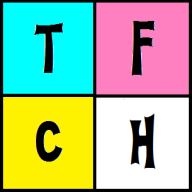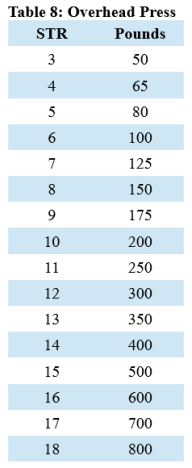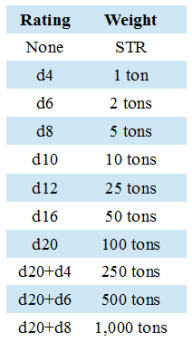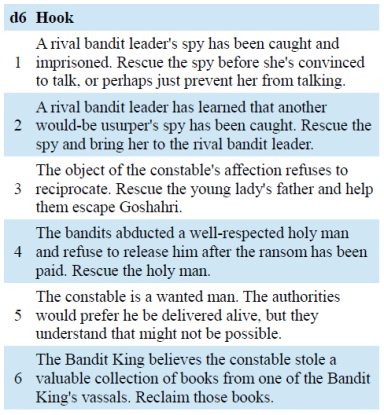
As mentioned earlier this week, I’ve uploaded an updated playtest version of The Four Color Hack, implementing some changes based on playtesting and feedback. One thing that didn’t get changed in the update was lifting capacities for heroes. In the current playtest version, I think those lifting capacities are too low. They just didn’t seem super-heroic enough; this was bugging me, and I couldn’t figure out how to get rid of the bug. As is the case when I face things that bug me, it helps to ignore the issue for a bit and then return to it with fresher eyes.
Notice the two tables to the below-right. The first shows the overhead press for heroes who do not have super-strength. It dawned on me that the only characters in the game that have a STR Stat are the heroes. Villains don’t have Stats such as STR or INT or CHA. With this in mind, I chucked the d20 System, which is from where I took the overhead press amounts in the first draft of the table.

Instead, I fell back on the third edition of DC Heroes and those old Official Handbook of the Marvel Universe comic books. As you can see, even a hero with an “average” STR of 10-11 is quite strong with an overhead press of 200-250 pounds.
For super-strength, I got rid of the multiplier. Instead, a Hero Die gives a hero a specific level of super-strength as a defined weight. Thus, a hero with Super-Strength d8 has an overhead press of 5 tons. De-linking STR and super-strength this way makes it possible to have a hero who excels in hand-to-hand combat (meaning has high STR), but who isn’t necessarily super-strong. It also makes it possible to have a hero who can shift quite a bit of weight (say, Super-Strength d12), but who has only average skill in hand-to-hand combat (say, 10 STR).
The other item that was on my list of problems regarding the rules was how to handle on-going effects created by the use of powers. Professor Positron had Positronic Energy Control d12. He packs a lot of power with his ability to control positrons. Can Professor Positron surround a villain in a positronic force bubble? Sure. The player just needs to describe the effect and make a Stat check. If he succeeds, the villain is trapped by a Positronic Bubble d12.
This bubble lasts as long as Professor Positron maintains the effect or until the villain escapes/destroys/whatevers the bubble. While the positronic bubble is in effect, Professor Positron no longer has Positronic Energy Control d12. Instead, he has Positronic Energy Control d10. The concentration, energy expenditure, et cetera, has temporarily reduced Professor Positron’s ability to control anti-electrons.  When the Positronic Bubble d12 goes away, Professor Positron’s power returns to its previous level.
When the Positronic Bubble d12 goes away, Professor Positron’s power returns to its previous level.
This system for on-going effects seems flexible enough, and it taps into the idea that dice upgrade and downgrade, as well as the idea that a larger die can be traded for two smaller dice. Thus, Professor Positron could conceivably trap two different villains in two different Positronic Bubbles, but each bubble would be d10 instead of d12, since 1d12 equals 2d10.
In news unrelated to TFCH, work progresses on Goshahri: The City in a Cave, a site-based adventure setting due to be released to Patrons only before the end of January. If you’ve not checked out my Dangerous Places, please do so. You’ll find the first adventure, Narvon’s Stair, which was released for the whole world in December. If you like what you see, think about committing $1 a month and become one of my Patrons.
Tags: Dangerous Places, TFCH


 When the Positronic Bubble d12 goes away, Professor Positron’s power returns to its previous level.
When the Positronic Bubble d12 goes away, Professor Positron’s power returns to its previous level.
